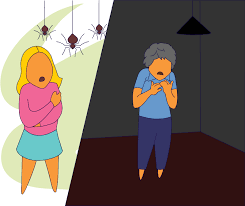Definitions of Abnormality (Psychopathology Model Answers) (Paper 1 Model Answers)
Which two of the following are examples of Jahoda’s criteria for ‘ideal mental health’? Shade two boxes only. For each answer completely fill in the circle alongside the appropriate answer. ( 2 marks)

Model Answer
B and E
Read the item and then answer the question that follows.
The following article appeared in a magazine:
Hoarding disorder – A ‘new’ mental illness
Most of us are able to throw away the things we don’t need on a daily basis. Approximately 1 in 1000 people, however, suffer from hoarding disorder, defined as ‘a difficulty parting with items and possessions, which leads to severe anxiety and extreme clutter that affects living or work spaces’.
Apart from ‘deviation from ideal mental health’, outline three definitions of abnormality. Refer to the article above in your answer. ( 6 marks)
Model Answer
One definition is statistical infrequency or deviation from statistical norms. The article states that approximately 1 in 1000 people suffer from hoarding disorder. This low prevalence rate indicates that hoarding behaviour is rare or uncommon compared to the majority of the population. It falls outside the statistical norm and can be considered abnormal in terms of frequency.
Another definition is deviation from social norms. The article describes hoarding disorder as a difficulty parting with items and possessions, resulting in extreme clutter that affects living or work spaces. In many societies or cultures, maintaining tidy and organised spaces is the norm, and hoarding behaviour contravenes these expectations. It goes against the unwritten rules and social norms surrounding cleanliness and clutter-free living, making it abnormal in a social context.
The third definition is failure to function adequately. The article suggests that hoarding disorder leads to severe anxiety and extreme clutter that affects living or work spaces. This behaviour can cause significant distress and impairment in an individual's daily life and functioning. When hoarding behaviour interferes with an individual's ability to maintain a functional and organised living or work space, it indicates a failure to function adequately, which is another characteristic of abnormality.


